Stefano Rossignoli 14 febbraio 2012
Parte 1 – Introduzione. Come iniziare
Parte 2 – Porifera, Archeociata, Stromatoporoidea
Parte 3 – Coelenterata (Coralli)
Parte 4 – Molluschi
Questo particolare tipo di strutture sedimentarie è molto utile nella ricostruzione della storia dello strato fossilifero, più precisamente per quanto riguarda il cambiamento della sua inclinazione.
E’ più comune notarle all’interno di gusci di Bivalvi o Brachiopodi (che vedremo prossimamente, comunque i Brachiopodi sono stati e sono animali con un guscio bivalve ma non sono molluschi!). Questo discorso è più complicato di quanto sembri come sempre: E’ raro trovare Bivalvi completi e quindi chiusi che contengano questo tipo di strutture, ma può capitare in un accumulo caotico di organismi… E’ più comune trovare Brachiopodi completi ma capiremo in seguito il perchè.
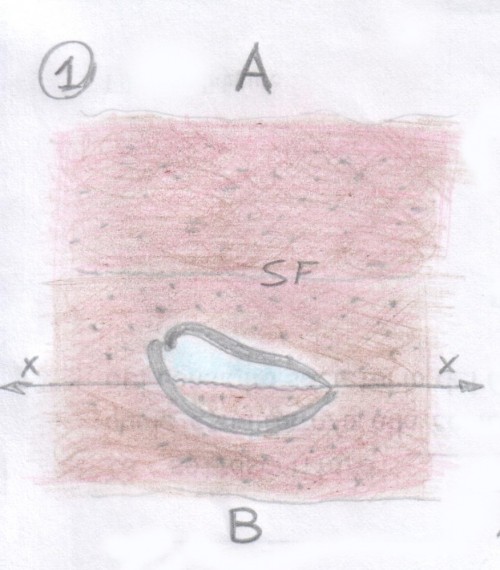
Legenda delle figure:
– In Rossiccio puntinato di grigio la Matrice – In azzurrino il Cemento
– A= Alto
– B= Basso
– x= asse x – y= asse y – z=asse z
SF= scienzafacile!!!
In una situazione in cui non sia riconoscibile la stratificazione di una roccia sedimentaria, quando troviamo una sezione di un guscio bivalve (che sia Mollusco o Brachiopode!) come in figura 1 , ci possiamo rendere conto di cosa è successo in questo caso (le fotografie alle strutture geopetali vere le farò appena mi recherò in qualche posto interessante da questo punto di vista! – Le trovi ora, finalmente, in fondo all’articolo…):
Il guscio (articolato, ovvero completo di entrambe le valve) è stato (o era già) seppellito ed è stato riempito da matrice solo parzialmente.
Al momento del seppellimento, lo strato di sedimento che ha ricoperto l’organismo doveva essere orizzontale (è uno dei principi base della stratigrafia – leggi su ez Geology). In figura 2 gli assi x e y rappresentano il piano orizzontale degli strati originari.
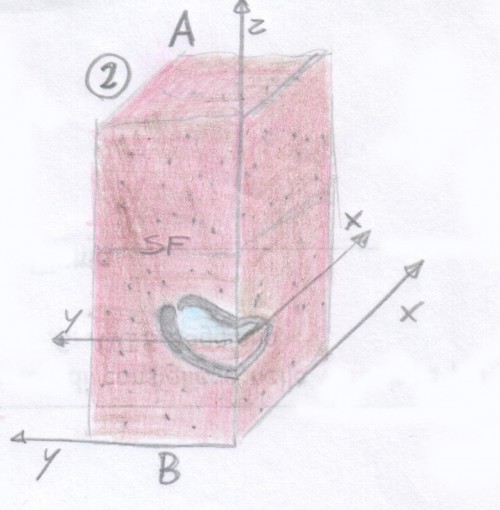
Anche la matrice interna si depose in orizzontale. Successivamente, il cemento (precipitato chimicamente da soluzioni acquose circolanti) ha riempito la cavità rimanente e l’interfaccia, ovvero il limite tra matrice sedimentaria e cemento, evidenzia la superficie orizzontale iniziale.
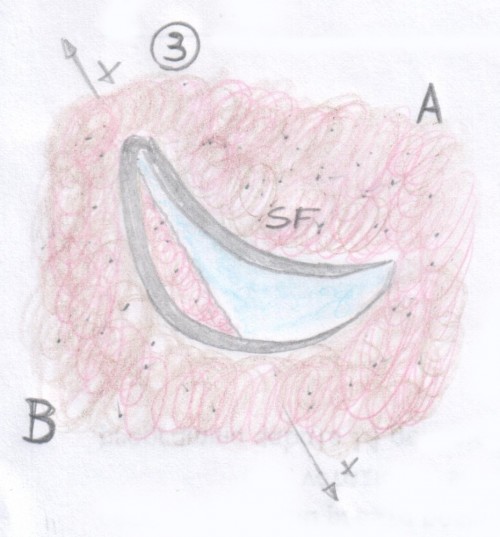
Se queste strutture geopetali (e soprattutto il limite tra matrice e cemento come in figura 3 e 4 in cui x rappresenta l’inclinazione dell’orizzonte originale) le troviamo inclinate, possiamo pensare di conseguenza che le rocce abbiano cambiato inclinazione nel tempo e risalire quindi a quanto ammonta l’inclinazione attuale dello strato e addirittura capire se lo strato si è rovesciato (dopo ovviamente essere stato spostato/piegato!)
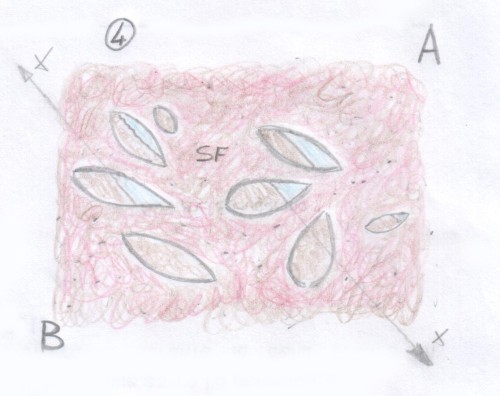
(In fig.4 un paio di conchiglie sono completamente piene di matrice.)
(In fig.5 gli strati sono rovesciati! Qui abbiamo anche 2 conchiglie completamente piene di matrice e una piena di cemento.)
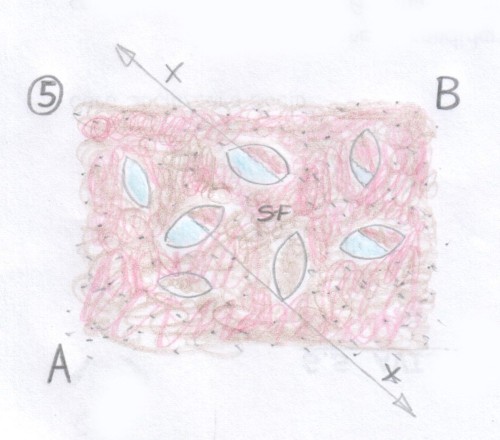
Sembra così facile, invece, se avete un po’ di pazienza e intuito, le cose le possiamo complicare un po’ ma d’ora in poi si parlerà solo di geometria…
Fino ad ora abbiamo detto che l’interfaccia matrice cemento all’interno dei gusci rappresenta il vecchio orizzonte, ovvero la superficie orizzontale prima della messa in posto della roccia attuale.
Per rappresentare un piano invece servono due assi, non solo uno.
Allora per ricostruire realmente quale fosse il piano orizzontale primario (ovvero quello originale) non basta una sezione ma ne servono almeno due tra di loro angolate.
Tornando alla figura 2, in questo caso l’asse x e y della sezione rappresentano un piano orizzontale …ma se osserviamo la figura 6?
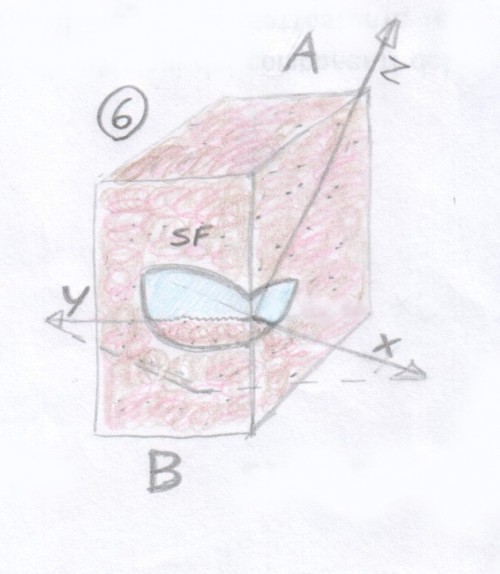
In questo blocco parallelepipeidale (fig.6) di roccia in cui, anche in questo caso, non sia riconoscibile la stratificazione del sedimento vediamo il guscio riempito parzialmente da matrice e poi da cemento. E’ simile alla figura 1 ma cambia l’inclinazione dell’asse x, quindi il piano rappresentato da x e y nella fig.6 è diverso da quello di fig.1.
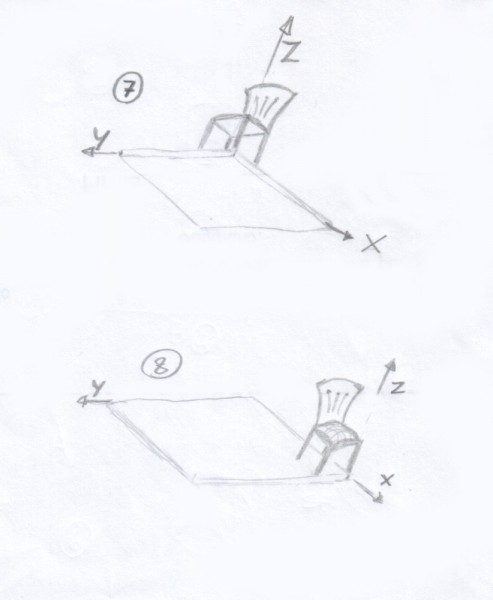
In figura 7 mi sono divertito a ricostruire il piano x-y indicato in figura 6, disegnandogli sopra una sedia per far capire ai meno avvezzi al disegno tridimensionale (e credetemi: ce ne sono tanti…) come è disposto quel piano.
In effetti, un piano inclinato, disegnato su un foglio, può essere interpretato almeno in due modi …osservate in figura 8! Il piano è simile a quello di fig 6 e 7 ma è diverso dal piano suggerito dalla struttura geopetale di fig.6…
PS I disegni sono realizzati a mano libera, ad occhio e quelli in 3D, più o meno, in assonometria cavaliera…
Le fotografie:
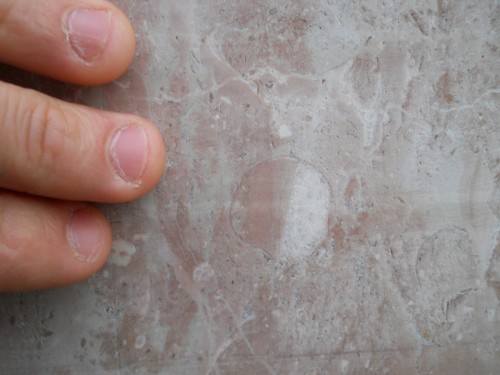
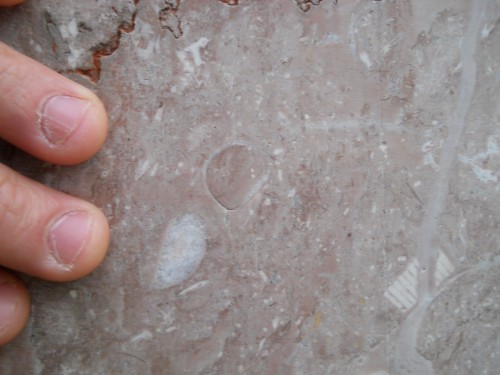
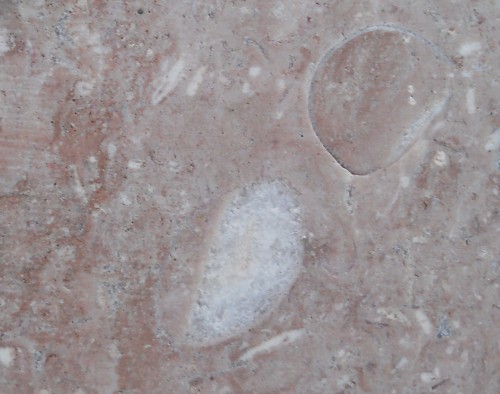
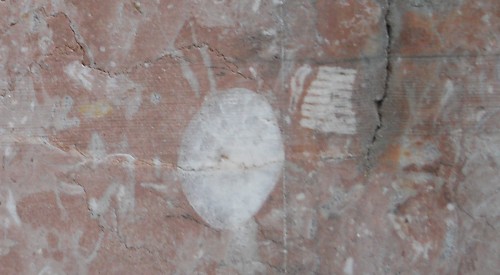
Nel caso raffigurato qui sopra potremmo ipotizzare che il Brachiopode si sia appoggiato o comunque fossilizzato in posizione di vita, quindi con le valve orizzontali e il crinoide sulla destra potrebbe essersi depositato sul fondale sempre in posizione orizzontale aiutandoci a capire che lo strato che osserviamo sarebbe traslato di circa 90° …ma potremmo sbagliarci!!!
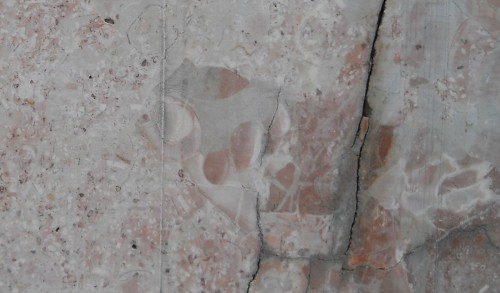
Parte 6 – Molluschi 2 (I Gasteropodi)